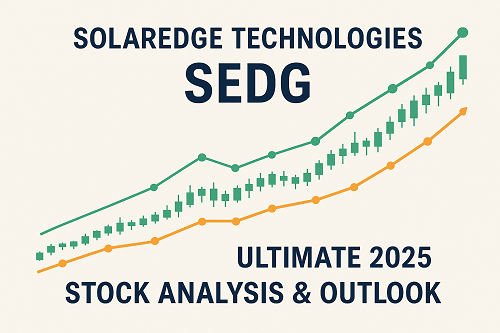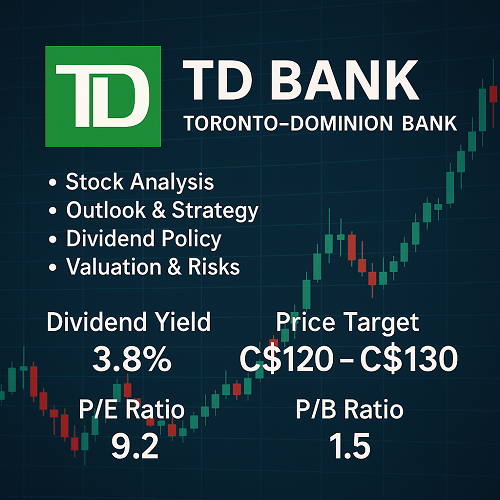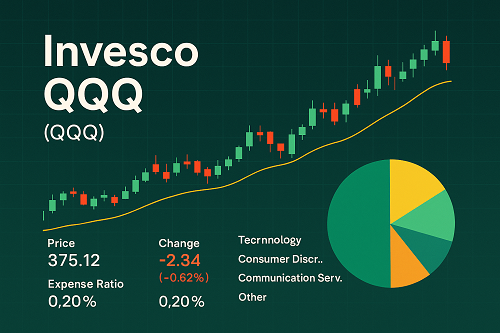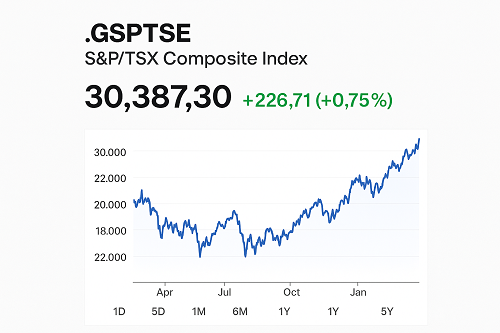SolarEdge Technologies, Inc. (ticker: SEDG) is a global leader in smart-energy technology, founded in 2006 and based in Milpitas, California (with roots in Israel).
The company specialises in solar inverters, power optimisers, batteries and energy-management systems. Listed on NASDAQ, SEDG is relevant to investors because:
- It sits at the intersection of renewable energy growth and energy-transition infrastructure.
- As solar deployments grow globally (residential, commercial, utility), the inverter/storage layer is a critical technology platform.
- Despite this opportunity, the company has faced margin pressure, inventory and supply-chain headwinds, making it a “recovery or turnaround” candidate.
- For traders, SEDG presents volatility, event-driven swings, and potential upside (or downside) depending on macro/industry trends.
In short: SEDG is more than just a solar equipment provider—it’s a proxy for distributed energy, storage, and grid optimisation. Understanding its positioning offers a window into the broader clean-energy transition.
Business Model & Competitive Advantage
Core Products & Services
SolarEdge sells the following major product lines:
- Solar inverters (converting DC from panels into AC for consumption)
- Power optimisers (module-level optimisation)
- Energy storage systems (batteries for residential/commercial applications)
- Monitoring and energy-management software/platforms
Competitive Advantages
- Technology depth: SolarEdge has developed a vertically integrated inverter/optimiser ecosystem which provides value in efficiency, safety, and monitoring features.
- Installation footprint: Its products are deployed in many geographies, giving it scale and installed-base advantages.
- Macro tailwinds: The growth of rooftop solar, behind-the-meter storage, grid-edge solutions provide structural advantage.
- Manufacturing & localisation push: Recent commentary indicates the company is executing a strategy to localise manufacturing and reduce costs.
Competitive Landscape
However, the company operates in a highly competitive market:
- Several global inverter/manufacturer competitors (including Chinese OEMs) exert price pressure.
- Inventory and module pricing cycles can squeeze margins.
- Solar policy, tariffs and subsidy changes are unpredictable and can shift demand quickly.
- As a hardware-centric business, it must continually innovate to avoid commoditisation.
Thus while SolarEdge has advantages, the margin narrative and execution risk remain significant.
Recent Financial Performance
Q2 2025 Results
SolarEdge’s Q2 2025 results were encouraging in terms of sequential growth and margin expansion:
- Revenues: US$289.4 million, up ~32% from the prior quarter (US$219.5 million) excluding discontinued operations.
- Non-GAAP gross margin: 13.1% vs 7.8% prior quarter.
- GAAP gross margin: 11.1% vs 8.0% prior quarter.
- Shipments: 1,194 MW (AC) of inverters + 247 MWh of batteries for PV applications.
- Outlook (for Q3): Revenue expected in the range ~US$315 m to US$355 m.
Longer-Term Financials
- Historical financials covering past 10 years show cyclical revenue and margin swings.
- Institutional ownership: roughly 95% of shares are held by institutions, signalling market attention but also potential lack of retail float.
- Dividend: None currently (the company is focused on reinvestment and recovery).
Interpretation
The sequential growth and margin improvement in Q2 2025 are meaningful—they suggest the company may be turning a corner in execution. However:
- Absolute margin levels (13% non-GAAP gross margin) remain modest for hardware—so profitability is still under pressure.
- Revenue base (~US$300 m in the quarter) is relatively small in the context of its addressable market.
- The outlook is positive but contingent on demand recovery and cost discipline.
Industry & Macro Tailwinds
Solar & Storage Growth
- Global solar installations continue to scale, driven by decarbonisation targets, cost declines and policy incentives.
- Behind-the-meter (BTM) storage is growing as consumers and businesses seek energy independence, resilience, and optimisation of utility rates.
- The synergies between solar generation + inverter optimization + storage + monitoring provide multi-product cross-sell opportunities for SolarEdge.
Policy & Incentives
- In the U.S., tax credits (such as the Investment Tax Credit for solar) and storage incentives remain key drivers for adoption.
- Local manufacturing incentives, tariffs, and localisation policies can also favour companies with on-shore capacity. SolarEdge’s push into U.S. manufacturing may benefit.
Supply Chain & Cost Declines
- As module/inverter costs continue to decline, more systems become economic — expanding the addressable market.
- However, component shortages, inflation, logistics and tariffs pose risk if not managed.
ESG & Corporate Demand
- Corporations and utilities are increasingly committing to net-zero and distributed energy resources (DER). SolarEdge sits at the DER edge, enabling value beyond just installations (monitoring, optimisation, grid services).
Thus the long-term backdrop is favourable, making SolarEdge an appealing “clean-energy infrastructure” play — provided execution holds.
Key Risks & Headwinds
It’s essential to understand the risk profile. Here are major risks for SEDG:
Margin & Cost Pressure
- The hardware nature of the business means pricing pressure from competitors (especially lower-cost producers) can erode margins. (e.g., in Europe the company cited double-digit price cuts).
- Inventory build-up risk: Excess supply or slower installations can hurt margins and lead to write-downs.
- Tariffs, duties or component import costs can add unexpected costs.
Demand Cycles & Macro Uncertainty
- Solar adoption can be volatile by region; a slowdown in installations (e.g., in Europe) could impact growth.
- Interest rate environment: As rates rise, the financing costs for solar projects increase, potentially dampening demand.
- Policy risk: Changes in incentive programmes (tax credits, subsidies) can change ROI dynamics drastically. Example: A proposed U.S. fiscal package threatened to remove credits for equipment-leasing models, impacting installations.
Competitive & Technology Risk
- Emerging inverter/storage technologies may reduce SolarEdge’s competitive edge.
- Chinese OEMs or other consolidators may drive down prices or widen feature gap.
- A customer bankruptcy or large installer collapse could create credit risk (SolarEdge already flagged one).
Execution Risk
- The company must scale manufacturing, localise supply chain, manage costs — failure to execute could damage credibility.
- High institutional ownership implies expectations are already baked in; any miss could cause outsized negative reaction.
In sum: While the long-term outlook is positive, the path is laced with execution and cyclical risk — making SEDG a higher-risk, higher-reward proposition.
Analyst Sentiment & Price Targets
Analyst views on SEDG are currently mixed, reflecting the balance of opportunity & risk.
Consensus Ratings & Targets
- According to MarketBeat: Based on 29 analysts, the consensus rating is “Reduce” (11 Sell, 18 Hold, 0 Buy). Average price target ~$20.44, implying ~-45% downside from ~$37 current price (as of Oct 2025).
- Benzinga analysis of 12-month price targets: average ~$25.42, high ~$36, low ~$7.
- Analyst upgrade activity: Recently several analysts upgraded outlooks. Eg: Barclays set target $36 in Oct 2025.
Interpretation
The low consensus target implies significant scepticism: analysts may believe the company is still far from stable profitability and face structural headwinds. The range of targets (from ~$7 to ~$36) indicates a wide divergence in views—some bullish scenario believers, many cautious.
For traders/investors this means: if execution improves meaningfully, potential upside is large; but if execution falters, downside risks remain material.
Valuation & What the Market Is Pricing In
Trailing Multiples & Metrics
- Given the company is currently not consistently profitable, traditional P/E metrics are less meaningful. Focus is on revenue growth, margin improvement and cash-flow generation.
- Non-GAAP gross margin for Q2 2025 was ~13.1%. This suggests the business is improving but not yet operating at high margin scale.
- Forecasts: Some long-term models (e.g., StockScan) project SEDG reaching ~$68.08 by 2030 under bullish assumptions.
What the Market is Baking In
Given the ~$20 average target and current price ~$37:
- The market either expects limited upside in the near term, or significant risk of downside.
- To “earn” a higher multiple, SolarEdge must deliver sustained margin improvement, scale growth, and stable profitability.
- If revenue growth slows or margins reverse, the stock could justify the lower end of the analysts’ range (~$7-$20).
Valuation Framework
For a potential upside scenario:
- Suppose SolarEdge grows revenue at ~20-30% for next 3-5 years, improves gross margin to ~20-25%, then operating margin to ~8-10%.
- If the company then trades at ~20× forward earnings (modest for growth hardware) it could reach a per-share value well above current levels.
Conversely, in a base/bear case where growth stalls or margins compress, multiple contraction could drive the stock lower.
Comparison to Peers
Other solar/inverter/storage companies (e.g., Enphase Energy, Inc.) currently trade at higher multiples given stronger profitability and growth — so SolarEdge has a “catch-up” challenge.
Trading/Investment Strategies for SEDG
Bullish Entry Strategy
- Consider entering if the company posts a strong beat on quarterly earnings and increases guidance (e.g., Q3 2025 shows revenue >US$350m & margin >15%).
- Set a target range toward the upper analyst forecast (~US$36) with a stop-loss near the lower confidence interval (~US$20).
- Use options for leveraged exposure: e.g., call spread with a strike near current price and target ~$45-$50 in 12-18 months if bullish thesis plays out.
Conservative Investment Strategy
- Wait for sustained profitability (e.g., two consecutive quarters of positive operating income) before allocating significant capital.
- Use dollar-cost averaging into the position, given high volatility and execution risk.
- Monitor leading indicators: inverter shipment trends, battery product uptake, geographic installation growth, policy changes.
Bear/Trading Short Strategy
- One could short (or use put options) if the company misses guidance, reveals inventory build-up, or a major subsidy/incentive change hits the industry.
- A risk-managed approach is key because shorting a volatile position can be dangerous if a positive surprise occurs (given high short interest in some periods noted).
Key Trigger Events to Watch
- Q3 2025 earnings: Did revenue beat and margin expand as guided (US$315-355m)?
- Policy announcements: Tax credits, tariffs, solar financing models.
- Competitive announcements: New products from rivals, pricing wars.
- Supply-chain/commentary: Inventory levels, tariffs, localisation progress.
- Technical levels: If stock breaks above key resistance (~US$45) or falls below support (~US$25-30) could signal trend shifts.
Conclusion: Bull, Base & Bear Scenarios
Bull Case (~US$50-US$60+ in 12-24 months)
- SolarEdge executes manufacturing localisation, beats on Q3 and raises guidance.
- Global solar + storage demand accelerates, driven by policy tailwinds.
- Margins expand above 15-20%, the company hits profitability, the stock re-rates.
- Broad clean-energy rally lifts valuation multiples.
Base Case (~US$30-US$40)
- Company grows moderately, margins improve but remain modest.
- Execution holds, but no big upside surprise.
- Stock trades in line with moderate expectations, limited re-rating.
Bear Case (~US$10-US$20)
- Demand weakens in key markets (Europe/US).
- Margins compress due to price pressure or inventory build-up.
- Company misses guidance, or policy support is rolled back.
- Market de-rates the hardware business model further.
My View
Given current data: I lean toward a base-to-bull case if SolarEdge continues its improvement trajectory. The risk/reward appears asymmetric: substantial upside if execution plays out, but material downside if the company falters. For traders, this means the stock is a speculative recovery play rather than a safe income or stable growth stock.
Appendix: Key Metrics & Quick Facts
- Ticker: SEDG
- Company: SolarEdge Technologies, Inc.
- Q2 2025 Revenue: US$289.4 million (up ~32% q/q)
- Non-GAAP gross margin Q2: ~13.1%
- Analyst consensus price target: ~$20.44 (MarketBeat)
- Analyst range: ~$7 to ~$36 (Benzinga)
- Major risks: pricing pressure, inventory, subsidy/policy change, execution.
- Major tailwinds: solar/storage growth, tax credits, DER expansion.
Final Thought
If you’re seeking a deep-value or speculative energy-transition stock, SEDG could merit attention — provided you’re comfortable with high volatility and execution risk. If you prefer safer, more predictable growth, this may not yet be the right fit.
Recommendation: Monitor the next quarter’s results closely. A strong beat could trigger the rally; a miss could open the downside.





 XAUT-USD
XAUT-USD  AMD
AMD  MARA
MARA  SHOP
SHOP  BULL
BULL  CL=F
CL=F